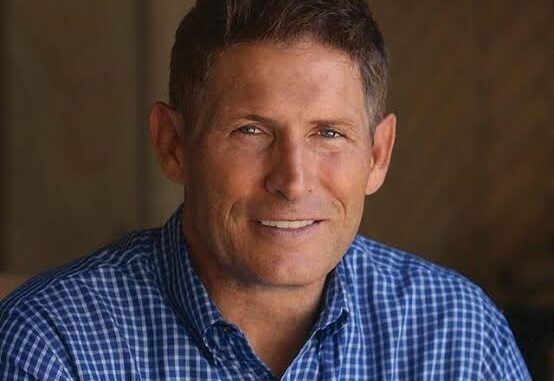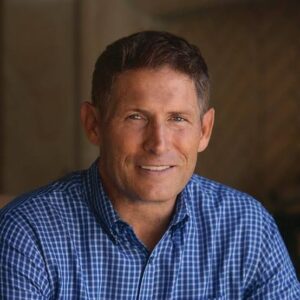
Steve Young Opens Up About Mental Health: A Personal Journey and Call to Action.
In an emotional and revealing public appearance, NFL Hall of Fame quarterback Steve Young took to the stage to share a deeply personal story that few had heard before. Known for his grit, determination, and legendary leadership on the football field, Young surprised many when he opened up about his long-standing battle with childhood separation anxiety and his perspective on mental health. His message was clear: mental health struggles should no longer be stigmatized, and seeking help is not a sign of weakness but a critical act of self-care.

For years, Steve Young had been the embodiment of success. A two-time NFL MVP, a Super Bowl champion, and one of the most revered quarterbacks in the history of the sport, Young’s legacy was cemented in the annals of football history. But in a candid speech, Young revealed a side of himself that his fans and even those closest to him may not have known—the vulnerable child who battled internal anxieties while seemingly thriving on the outside.
“I didn’t know this, but I grew up with severe childhood separation anxiety,” Young, now 60, explained from the stage. “All I knew was that I didn’t sleep over at other people’s houses. I had straight A’s, I didn’t miss a day of school, and I was captain of three sports. I mean, if you knew me back then, you’d say, ‘That kid’s killin’ it.’ Because I was killing it. But if you said, ‘Hey, wanna sleep over at my house?’ The answer was: ‘It isn’t happening.’”
Early Life: A High Achiever With Hidden Struggles
Young’s childhood was marked by remarkable achievement. He was the poster child for success—a straight-A student, a star athlete, and a leader both in and out of the classroom. From the outside, Young’s life seemed perfect, and his relentless work ethic further amplified that perception. “I wasn’t just good at what I did, I excelled,” he said. “But no one saw what was happening when the sun went down.”
Young described a life that, despite its outward appearance of ease, was internally fraught with anxiety and fear. His fear of separation was so intense that he avoided any situation that took him out of his comfort zone. Sleepovers, for example, were a nonstarter. “I wasn’t built for that from a clinical perspective,” Young admitted. “But there was another part of me that wasn’t afraid to go at a competition. If the sun was up, I was killing it. When the sun went down, things went south.”
Young’s juxtaposition of his daytime success with his nighttime struggles paints a picture familiar to many who live with anxiety or mental health challenges. It is a story of duality—of appearing fine to the world while fighting an internal battle. As a young boy, he didn’t have the language to explain what he was feeling, and as a result, his anxiety remained hidden, even from himself.
The College Years: The Pressure Intensifies
When Young enrolled at Brigham Young University (BYU) in 1980, his life took on a whole new level of pressure. The weight of expectation hung heavy on his shoulders. BYU had a rich football tradition, and Young, as the starting quarterback, was expected to lead the team to greatness. With each passing season, the pressure mounted, and so did Young’s internal struggle.
“There’s something about being on a pedestal that makes it all the more terrifying to admit you’re struggling,” Young said. “I thought I had to live up to everyone’s expectations—my coaches, my family, the fans—and I couldn’t let them down.”
On the field, Young was a competitor without equal. His passing accuracy, speed, and ability to read defenses made him a formidable force, but off the field, the burden of being the face of the team was overwhelming. “The more successful I became, the more difficult it was to acknowledge that I wasn’t okay,” Young explained. “I had this image of being a tough guy, and admitting that I was anxious or afraid just didn’t fit that image.”

The NFL: Triumphs and Tensions
Steve Young’s transition to the NFL brought with it more success—and more pressure. Drafted by the Tampa Bay Buccaneers in 1984, Young quickly realized that the NFL was a different beast entirely. After two challenging seasons with the Buccaneers, he was traded to the San Francisco 49ers, where he would eventually cement his legacy as one of the greatest quarterbacks of all time.
However, even at the height of his career, Young’s anxiety never fully disappeared. The pressure to perform, coupled with the intense scrutiny that came with being an NFL quarterback, made it difficult for him to feel at ease. “There were times I’d be in the locker room, trying to calm myself down before a game,” Young recalled. “It wasn’t just nerves; it was the kind of anxiety that makes your heart race and your mind spin out of control.”
Young’s success on the field often masked the struggles he faced off of it. He led the 49ers to victory in Super Bowl XXIX, was named Super Bowl MVP, and earned numerous accolades throughout his career. But behind the accolades was a man who understood that mental health was just as important as physical health.
The moment that crystallized this understanding came toward the end of his playing career. After sustaining multiple concussions, Young had to make the difficult decision to retire in 1999. “I had a lot of time to reflect on my career and my life,” he said. “That’s when I started to come to terms with the fact that I had spent most of my life running from my anxiety instead of facing it.”
Mental Health: A Call for Help
As Young stood on stage decades later, addressing a crowd that looked to him as a symbol of strength, he didn’t shy away from discussing the importance of seeking help for mental health struggles. His speech was both a reflection of his personal journey and a call to action for others to prioritize their mental well-being.
“I really do look at it simply as being lost in the woods when a park ranger comes by,” Young said near the end of his speech. “Would you feel ashamed to ask him for directions? No, you’d be an idiot not to ask him for directions.”
Young’s metaphor resonated deeply with the audience. His comparison between seeking help for mental health and asking for directions in a moment of confusion illustrated his central point: seeking help is not a sign of failure or weakness, but an essential step toward recovery and peace of mind.
He continued, “I want the same kind of experience for everyone as we make this less shameful. It would be foolish not to seek help for mental health. We need to lose that fear about getting that help. If I break my leg, I don’t walk around without a cast. Come on! It’s just stupid.”
Young’s message was direct and powerful: mental health struggles are real, and it’s time to remove the stigma associated with them. By sharing his story, Young aimed to encourage others to seek the help they need, without fear of judgment or ridicule. His message also carried an implicit challenge to the audience and to society at large: it’s time to normalize conversations about mental health.
A Broader Conversation: Athletes and Mental Health
Young’s public discussion of his mental health is part of a larger shift happening within the world of sports. In recent years, several high-profile athletes have come forward to discuss their mental health challenges, helping to shed light on an issue that has long been stigmatized. From NBA star Kevin Love to Olympic gymnast Simone Biles, athletes across a range of sports are beginning to talk openly about the mental toll that high-level competition can take.
This broader conversation around mental health in sports is long overdue. For decades, athletes were expected to be invulnerable, to “tough it out” and “push through” any obstacles that came their way. Mental health struggles were often seen as a sign of weakness, and athletes who admitted to having them risked being seen as less capable or less competitive.

But as more athletes like Steve Young step forward to share their experiences, the narrative is beginning to change. Mental health is being recognized as a crucial aspect of overall well-being, and athletes are no longer being asked to sacrifice their mental health for the sake of winning.
“People think that athletes are these invincible figures who can just push through anything,” Young said. “But we’re human too. We have the same fears, anxieties, and doubts as anyone
Leave a Reply